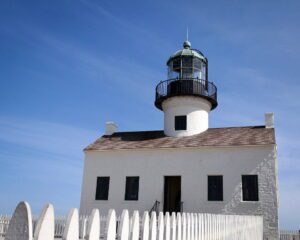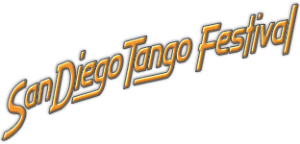Weather
San Diego weather during the festival usually has highs around 65°F and lows around 50°F. Contrary to popular belief, San Diego does have winter (occasionally), as well as Santa Ana’s (with 80°F in January!) so do check the weather when packing. Today’s Hourly Forecast. Ten Day Weather Forecast.
If you will be in San Diego before or after the festival there are many places to dance, check the listing of San Diego Milongas. Check out our Food and Drink and Map pages too.
The Embarcadero & Maritime Museum
The Embarcadero is directly across the street from the front of the Wyndham Hotel. Take a nice stroll along the bay, enjoy the ocean air, and visit the historic ships docked there that make up the Maritime Museum of San Diego. You can buy a ticket to visit all the ships at the kiosk across the street from the Wyndham, or purchase tickets online.
Further south, you will find the aircraft carrier USS Midway offering tours. This is not part of the Maritime Museum and requires a separate entry fee. You can save a couple of dollars by ordering tickets online.
Continuing south along the Embarcadero for 7/10ths of a mile will bring you to Seaport Village, a collection of water-front shops, restaurants, and entertainment. See it before it disappears in a redevelopment project.
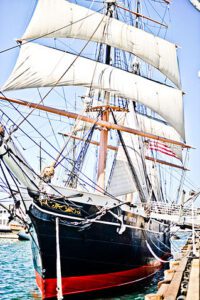
Santa Fe Depot & Museum of Contemporary Art
Near the corner of Kettner Blvd and Broadway (just 4/10ths of a mile from the Wyndham) you will find the Mission-style Santa Fe Depot. It was designed by San Francisco architects Bakewell and Brownin, and has been in operation since 1915. It is worth a peek inside for the elaborate tile and woodwork. The “Women’s Waiting Room” sign still exists; formerly a refuge for women away from stray, bothersome men, and now a visitor center.
Sharing the same building as Santa Fe Depot is the Museum of Contemporary Art San Diego. The museum exhibits often focus on works by artists from nearby Tijuana, Mexico.
On the other side of Kettner Blvd is the America Plaza building, shared by another part of the Museum of Contemporary Art San Diego and the San Diego Trolley Station.
For the really adventurous, hop on the San Diego Trolley Blue Line to San Ysidro and walk across the border into Tijuana for the day. Just be aware that it is the busiest border-crossing in the U.S. and the crowds at the crossing can be daunting. You might also want to review the advice on this page and this page before going.
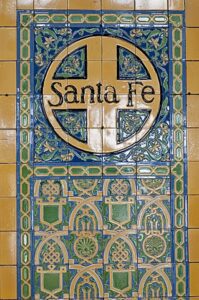
Horton Plaza
If you find yourself near the corner of Broadway and 4th Ave. you might like to take a peek at some San Diego history before it disappears. Broadway Fountain was designed by famed architect Irvin Gill and completed in 1910. It was the first water fountain in the world to feature underwater electric lights. The builders needed to negotiate permission from skeptical bureaucrats just to connect it to the electrical supply. The fire department was on hand when the light switch was first turned on.
Across the street is the historic US Grant Hotel, built by the son of president Ulysses S. Grant, also completed in 1910. The lobby has suffered somewhat from redecoration by various owners over the years, but it is still worth a look.
Just to the east of Horton Plaza, at the northwest corner of Broadway and 6th, is the San Diego Trust and Savings Bank Building. The bank opened in 1928 but is now repurposed as a Marriot Hotel and offices. The lobby still has the original Italian marble columns and architectural features. Go to the southwest corner of the lobby and take yourself on the secret self-guided tour of the original bank vault.
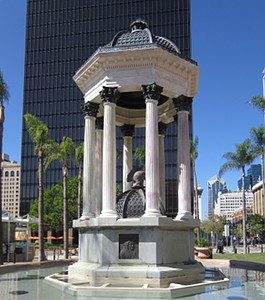
Gaslamp Quarter Historic District
San Diego’s Gaslamp District is an ever expanding area of restaurants, shops, bars, nightclubs, galleries, and theaters in downtown San Diego. It started growing in the late 1970’s during an effort to revitalize downtown San Diego. Originally focused on the Victorian architecture section of 5th Ave. just south of Broadway, the area has now expanded to greater than a 16 block area (although developer Alanzo Horton made the blocks half the size of other big cities of the 1860’s so that he could sell twice as much store front property).
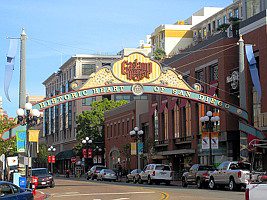
Balboa Park
Balboa Park has many buildings dating from the 1915 World’s Fair and is home to several excellent museums. Personal favorites include the Air and Space Museum (there’s a reason the airport is called Lindbergh Field), the Automotive Museum, and the Science Center.
The free botanical garden is housed in one of the largest lath structures in the world and was built for the 1915 World’s Fair. There are numerous gardens and many miles of hiking trails. A visit to the Old Cactus Garden might reveal some of the artistic inspirations for longtime San Diego resident Dr. Seuss! Don’t miss the world’s largest outdoor musical instrument at the Spreckels Organ Pavilion.
For places to eat and drink inside the park, be sure to check out The Prado (inside the House of Hospitality) and the Tea Pavilion at the Japanese Friendship Garden.
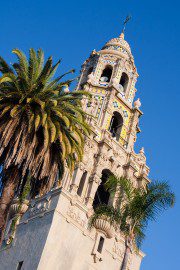
The San Diego Zoo
The San Diego Zoo, located inside Balboa Park, is one of the premier zoos in the world. It is a hub of conservation research as well as exhibiting animals in habitats that are close to their native environments. This large zoo requires at least a half day to visit, and you can expect to walk a lot so wear comfortable shoes.
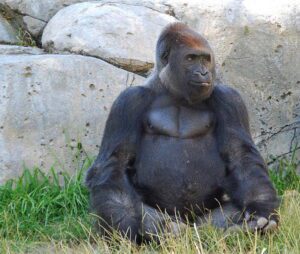
Old Town San Diego
San Diego Old Town is the historic heart of San Diego. Although it has become a bit touristy, there are still some well preserved historic buildings being used as museums and as restaurants. Check our Food and Drink page for less touristy places to eat in Old Town. Located just east of the airport along San Diego Avenue.
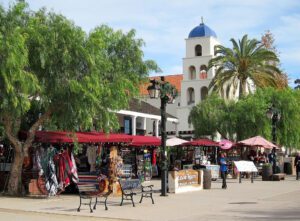
December and January might not be traditional beach weather, but a walk on the beach is a great way to experience San Diego, cool those tired feet by wading along the shore in the water. The beach at Coronado and Ocean Beach are the two closest beaches to the festival. For a great hike, Torrey Pines beach is about 15 minutes by car from the festival. If you walk far enough along the cliffs, you might see some local wildlife in its natural habitat.
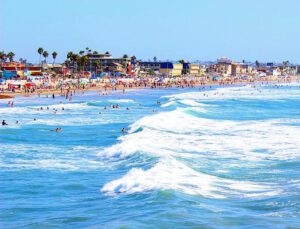
Coronado Island & Hotel Del Coronado
There are two ways to get to Coronado Island, take the ferry from the Broadway Pier ($5 each way), or drive there (don’t stop at the toll booth, there hasn’t been a toll charged in decades).
For tourist appeal you can’t beat Coronado Beach, and the 130+ year old Hotel Del Coronado. Much of the Victorian-era public spaces of the hotel are preserved in all their original opulence. Self-guided and docent-guided tours are available for free. If you take the ferry, be aware that the Hotel Del and beaches are a long, circuitous walk from the ferry landing, so you might want to rent a bike at the ferry landing, or get a ride.
There are also many fine restaurants and sights to see on the island. Be sure to check out the Coronado Visitor Center web site for more information.
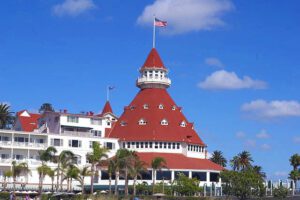
Cabrillo National Monument
